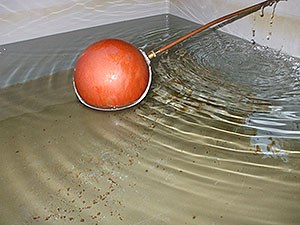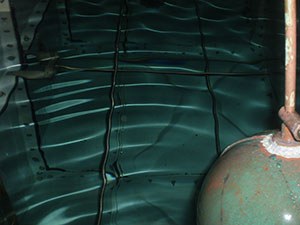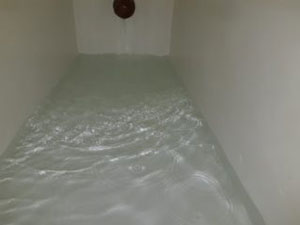
A clean tank is a safe tank
A build-up of sludge, scale and sediment forms the perfect environment for legionella bacteria to grow. That’s why you must have your cold water storage tanks inspected regularly to check they’re in good condition. If they do need cleaning, Dantek can get it done for you – safely and effectively.
At Dantek, we’ve been carrying out cold water tank cleaning and disinfection for more than 17 years, so our experience in this area is second to none. From a small 50 gallon domestic tank, right up to large sectional tanks, we’ll get the job done at a time that’s most convenient for you.
When you have an annual inspection of your cold water storage tanks, you’ll be advised then if cleaning and disinfection is required. All services are carried out by our knowledgeable engineers who receive highly technical training to be able to carry out this specialist work.
Disinfection and chlorination
When carrying out tank cleaning and disinfection, we follow very exact methods and procedures to ensure everything complies with the latest HSG274, ACoP L8 and COSHH guidance.
We use either chlorine or Sanosil as the disinfectant agent. If the tank is used for drinking water, the disinfectant must be flushed out of the system after disinfection. For other non-drinking water tanks, it’s an advantage to use Sanosil as it can be left in the system. It will degrade over time, so doesn’t need to be flushed out. That saves time and water.
It’s important that only knowledgeable and competent people carry out our cleaning and disinfection work. That’s why we put so much emphasis on training our engineers, ensuring they wear the correct PPE and use the best equipment for the job. And before we start, we always carry out a risk assessment to spot and control any potential hazards.
This is what our water tank cleaning procedure involves:
- We’ll advise everyone that cleaning and disinfection work is being carried out and place warning signs on all taps and showers to stop them being used.
- The tank inlet must be switched off. Then we’ll drain and inspect the tank. If it’s safe, our engineers will enter the tank to manually remove all debris, scale and sludge. The tank will then be refilled with fresh mains water.
- With the inlets and outlets turned off, the correct dosage of disinfectant will be added to the water and allowed to flow around the system.
- The engineer will check each tap or shower in turn, ensuring the disinfectant has reached all areas and remains at the correct strength for at least one hour.
- The system is then flushed through until no chlorine (less than 0.5PPM) is detected.
- All warning signs will be removed. The engineer will then ensure the system is back up-and-running and the site left clean and tidy.
- A full report will be produced, confirming the completion of the work, the condition of the tank and whether any remedial action is required.
- You will receive a clean and disinfection certificate for each system.
There are a few things we need your help with, so we can carry out our work successfully:
- Access to a foul water drain close to the tank – a nearby toilet may be fine.
- A close power source for our wet vac, pumps and site lighting.
- Access to all areas of your system, including any areas like a cleaners’ cupboard that is usually kept locked.
- A supply of mains water so we can refill the system.
- A member of staff who’s familiar with your water systems is also a big help.
Experts in helping you stay compliant
When it comes to staying HSE and COSHH compliant, our team of fully trained and highly experienced engineers know exactly what they’re doing.
They all receive high-level technical training and are continually assessed to ensure all their work is carried out safely, efficiently and in a way that meets the Legionella Control Association code of practice.
This is specialist cleaning and safety work, but you can trust Dantek to lead the way. Our engineers follow specific method statements to ensure all work complies with the latest HSG274 technical guidance and the ACoP L8 code of practice issued by the Health and Safety Executive, as well as all relevant COSHH regulations.




